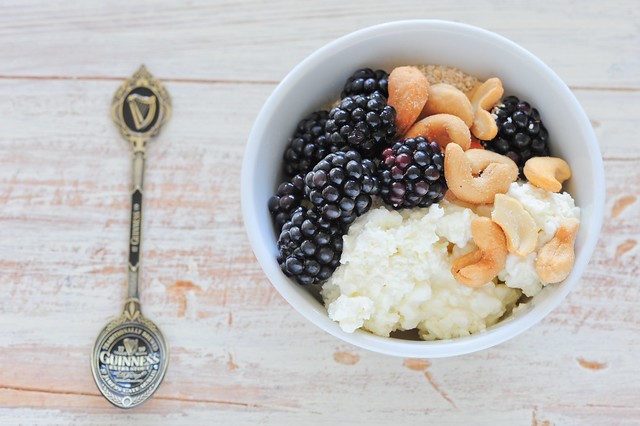COTTAGE CHEESE vs. GREEK YOGURT: Which is Healthier?

Cottage cheese just sounds sooo 70s, right?
Well, in an age when enthusiasm for cultured dairy is pretty high (oh hey, yogurt craze!), it's apparently making a comeback. Brands like Good Culture and Muuna are giving the packaging and recipes an upgrade to encourage healthy eaters to add it to their diet.
So should you trade your Greek yogurt for the chunky cheese?
We're comparing the two protein-rich breakfast foods (or snacks) to see which comes out on top.
Cottage Cheese vs. Yogurt: Nutrients
To see how they stack up, let's compare a single-serving (5.3-ounce) Maple Hill Organic Greek Yogurt to Good Culture's Organic Cottage Cheese Whole Milk Classic. These are both whole milk varieties (we're on team full-fat dairy), but most companies in both worlds also sell low-fat and non-fat varieties.
In this case, the Greek yogurt clocks in at 13 grams of protein in 140 calories, with 7 grams of sugar. The cottage cheese contains 19 grams of protein in 150 calories and just three grams of sugar.
The bottom line? Both boast impressive numbers that make them an excellent choice for a low-calorie, high-protein, and low-sugar breakfast or snack. Cottage cheese does have a slight advantage in terms of a little more protein and a little less sugar. Bonus: Both are also great sources of calcium.
Cottage Cheese vs. Yogurt: Gut Health
Now to which food your gut would root for.
Turns out, again, it's almost a wash. Greek Yogurt is made by straining milk that's been fermented via live cultures. Cottage cheese, similarly, employs cultures to create its signature curds. That means both will usually contain active cultures that benefit your microbiome--just check the ingredient list to be sure.
Cottage Cheese vs. Yogurt: The Bottom Line
When it comes to nutritional benefits, these dairy dishes deliver a pretty similar experience. The one area in which they really differ, though? Taste and texture!
Greek yogurt is thick and creamy and refreshingly tart. Cottage cheese is chunky and much milder in flavor. Your best bet, then, is to go with whichever you prefer, so you'll be more likely to actually eat it when you need a healthy protein boost.
Just remember: Choose brands that use organic milk from grass-fed cows when you can. And go plain! Flavored varieties tend to up the sugar exponentially. Add your own fresh berries, nuts, and seeds, instead.
Source: https://nutritiouslife.com/eat-empowered/
